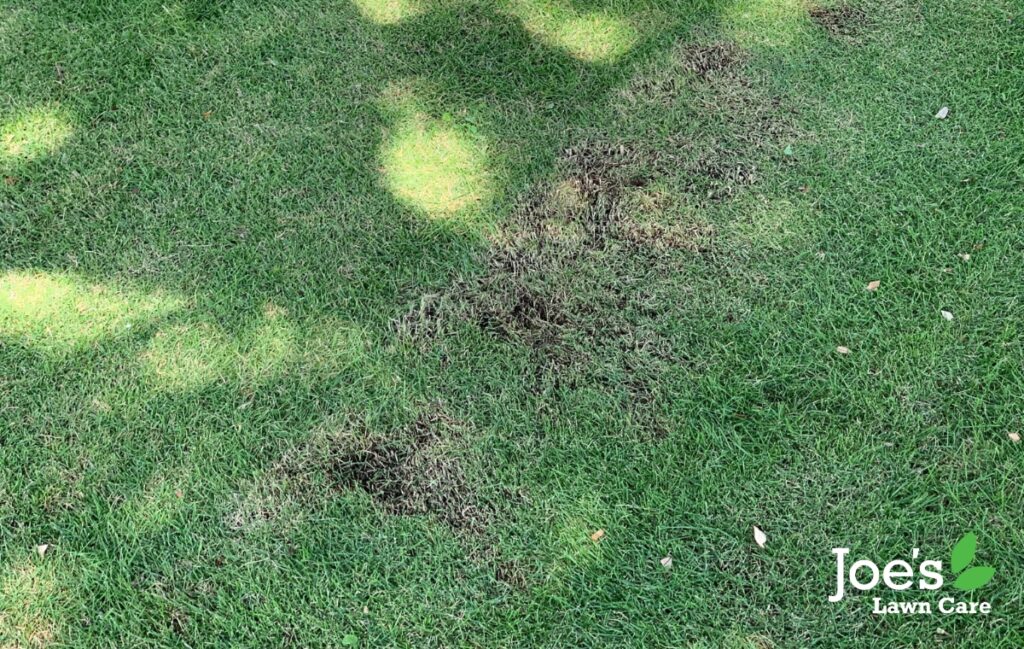We love a well-loved lawn. Greener than the Hulk, more lush than the soap shop and, free of any weeds, disease and pests. That’s the dream, right there. Unfortunately, though, it tends to remain a dream because lawns are an endless project. A labour of love. A patch of personal paradise where you get to enjoy your little slice of the great outdoors. So to discover the presence of black sooty mould is a serious vibe kill, so here is everything you need to know about sooty mould.
That’s because this icky fungi tends to mean one thing: your lawn has become affected by a sap-sucking insect of some kind or another. Luckily, sooty moulds don’t attack the plant directly. But what they do do is spread fast, prevent your grass from turning sunlight into food and, leave your lawn looking a little unsightly, which is where this guide from our lawn care professionals comes in.

What exactly is sooty mould?
For those that have never come across the term ‘sooty mould’, it’s essentially a type of fungal infection that affects plants, trees, shrubs, crops and, more commonly than them all, grass turf, covering the leaves and stems and the rest of the plant in a weird, almost creepy black, powdery coating that kind of resembles, you guess it, soot. And that’s the origin story.
Is sooty mould Harmful?
Okay, here’s the thing: the mould itself is not actually harmful to the plant. It doesn’t attack it or inject a disease or anything like that. What it does do, however, is interfere with the process of photosynthesis, reducing the plant’s ability to produce food. And that’s just half of the issue.
The fact you have sooty mold in the first place tends to suggest your lawn has become affected by a sap-sucking insect. That’s because sooty mould typically grows on plants that have been infested with bugs, such as aphids, whiteflies, mealybugs and scale insects, all of which produce a sticky, sugary substance called honeydew. This is what sooty mould feeds on.
What are the symptoms of sooty mould?
More often than not, sooty mould appears in the form of a dark brown, superficial fungal growth, kind of like ash, especially on the upper surface of your grass blades. Sometimes that will look like a pretty fine, powdery substance, and other times it can be a thick sheet of the stuff that can be peeled off when it’s dry.
Another big telltale sign is bugs. We’re talking sap-sucking insects, which might still be visible on your grass blades, probably just above the area when your sooty mould is growing. But even if they’re not there, take a look nearby and you might find them on any plants that are overhanging your infected area of lawn, while ants are also known to hang around these areas too.
What sort of conditions does sooty mould thrive in?
Typically, sooty mould tends to thrive in warm, humid conditions, which allows it to spread pretty quickly if not dealt with ASAP. And the longer you leave it unaddressed, the more chance this mould has to attract other insects, making your problem even worse.
How do you control sooty mould?
The thing about most visible lawn care diseases is, well, they’re just the by-product of a much bigger underlying issue, and sooty mould is no different. So to control this fungal disease, the first thing you need to do is address the probable insect infestation.
Controlling that can actually reduce the amount of honeydew produced and, in turn, limit the growth of the mold. You can do this by physically removing those annoying little insects through option 1) pruning the infested branches or option 2) using sticky traps, or you can go for option 3) and unleash the insecticidal sprays.
Of course, you may also need to physically remove the mold from the plant, which you can do with a soft-bristled brush or a high-pressure spray of lukewarm water. Then, with the underlying insect infestation also under control, your lawn should start to recover and enjoy living its best life.
Thanks for reading our guide to everything you need to know about sooty mould. For more lawn care tips and tricks, follow us on Facebook and Instagram.





